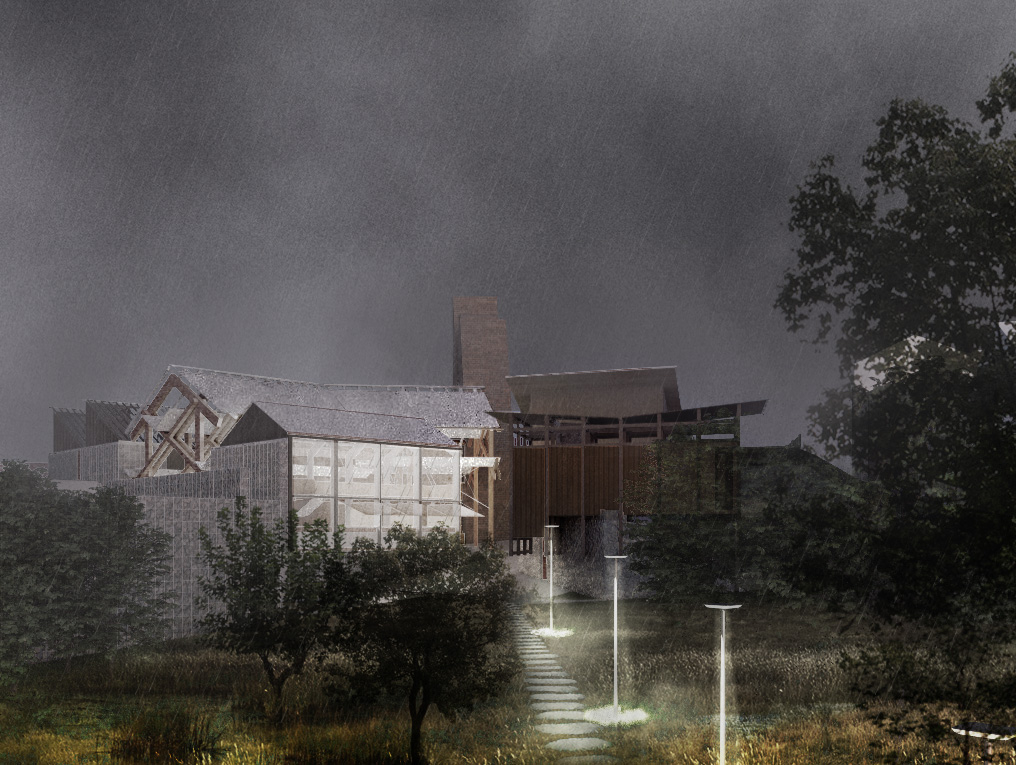
‘Daire’s Airc’: Edge Effects, Eco-tones & The Ecological Condenser
Studio leader: Iain Scott. Tutor: Mark Bingham
Edge effects are changes in biodiversity that occur inside the space surrounding the shared edge of two or more distinct eco-systems. This transitional zone, rich in biodiversity, is known as the ‘ecotone’. It is our hypothesis that the edge effect occurs in urban as well as natural landscapes, (within structural, spatial and sociological realms) and we could therefore take temporal ‘readings’ of its existence in our city of investigation, situated in the Irish UK borderlands; a territory with a deep and structural duality which underpins its existence spatially, economically and socio-culturally. This duality is encapsulated in the common use of two distinct names for the city; Derry (originating from the Irish Gaelic – Daire, meaning ‘oak grove’) and Londonderry – the English pre-fix added in 1613 by James I of England.
Taking poetic inspiration from the myth of a global flood that destroys ‘all life’; (Airc is Gaelic for Ark), we operated across a series of scales of investigation, from the metropolitan landscape to the body-scale, engaging in questions of material, social and cultural history; issues of climate-change and environmental depletion; histories of religious and political conflict, to propose a series of architectural and landscape projects which we term ‘ecological condensers’.










